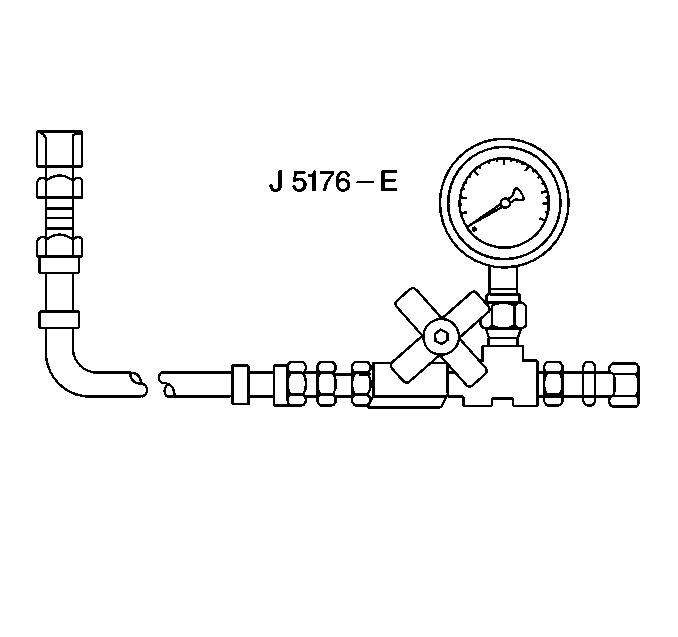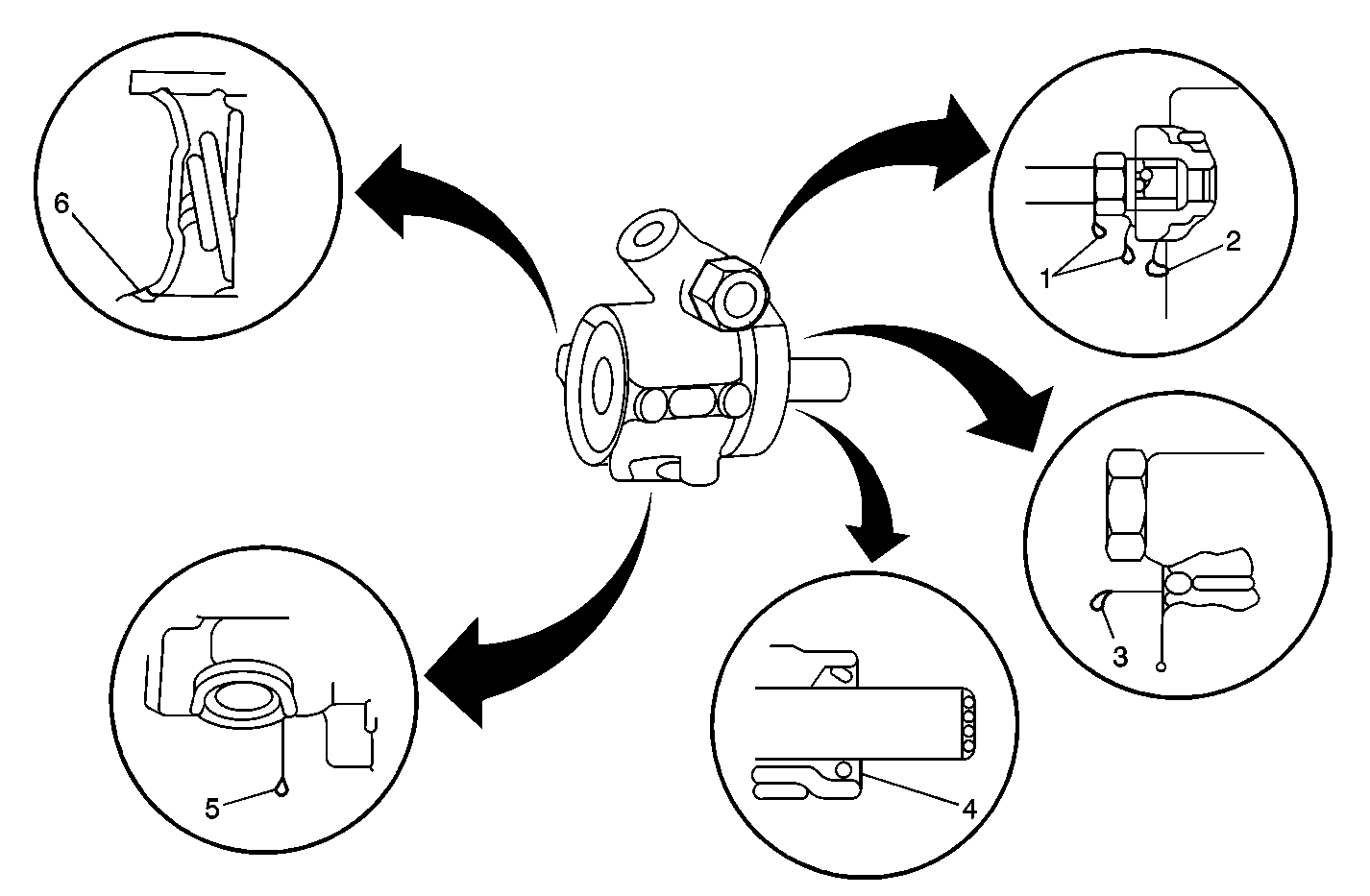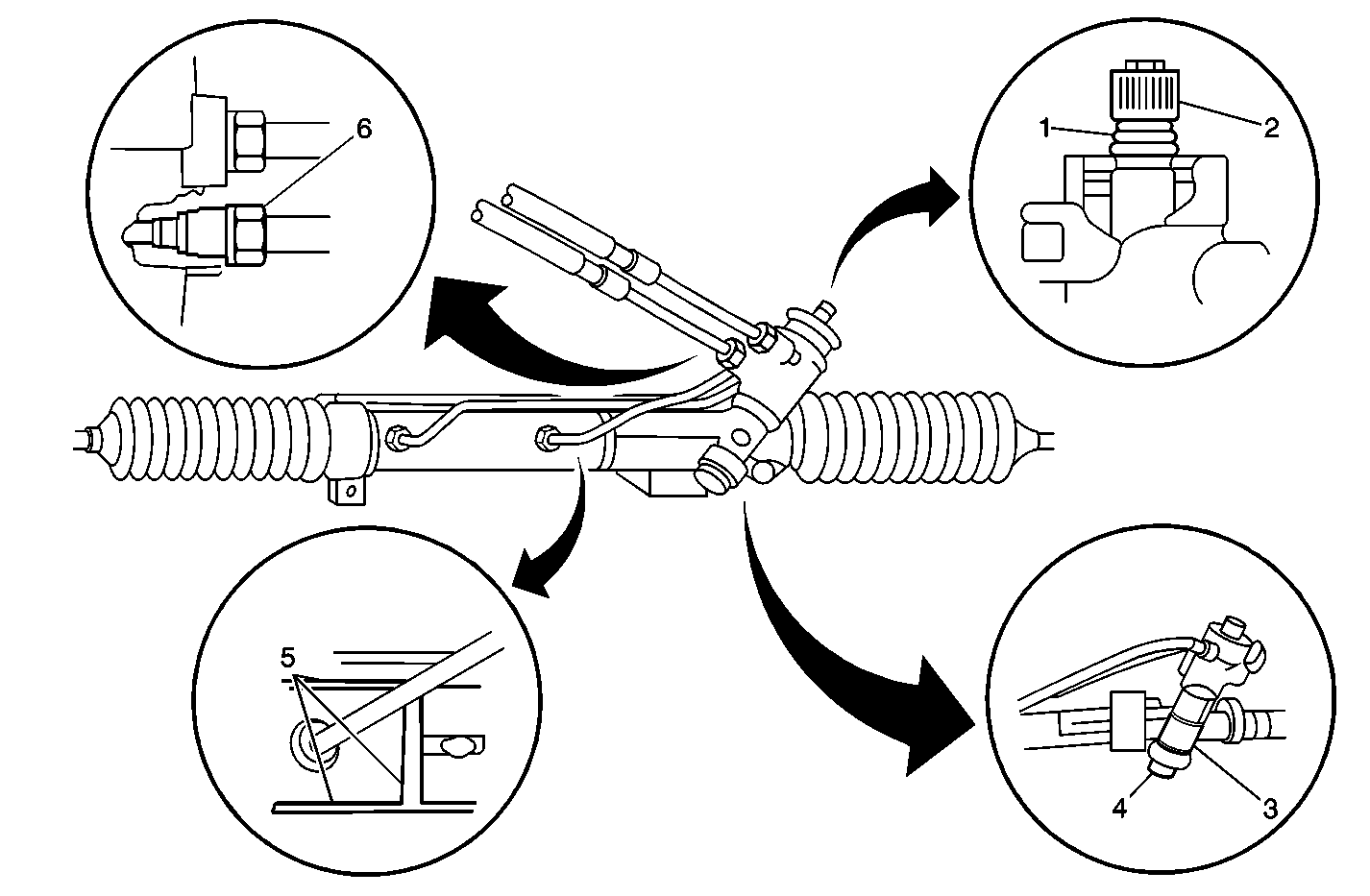Power Steering System Test Procedure

Test the power steering
system using the J 5176-D
Power Steering Pressure Gage as described here. You may also use the J 25323-B
Power
Steering Analyzer.
- Disconnect the pressure hose at the pump. Use a small container
in order to catch any fluid that might leak.
- Connect a spare pressure hose to the pump.
- Connect the J 5176-D
to both hoses.
- Open the valve on the gage.
- Start the engine.
- Allow the system to reach operating temperature.
- Inspect the fluid level. Add fluid if necessary.
- When the engine is at a normal operating temperature, the pressure
reading on the gage (valve open) should be 552-862 kPa (80-125 psi).
If the pressure is greater than 1380 kPa (200 psi), perform
the following inspections:
| • | Examine the hoses for restrictions. |
| • | Examine the flow control valve for proper assembly. |
- Record a series of pressure reading using the following procedure:
| 9.1. | Fully close the valve. Do NOT leave the valve fully closed for
more than 5 seconds. This may damage the pump. |
| 9.2. | Record the pressure reading each time you close the valve. |
| 9.3. | Perform this procedure 3 times. |
- Each reading should show at least 10 343 kPa (1,500 psi).
The 3 readings should be within 345 kPa (50 psi)
of each other.
| • | If the pressure readings are high enough and are within 345 kPa
(50 psi) of each other, the pump is functioning properly. |
| • | If the pressure readings are high enough, but the readings are
not within 345 kPa (50 psi) of each other, the flow control
valve in the pump is sticking. |
| • | Complete the following steps: |
| 2. | Clean the valve. Remove any burrs using a crocus cloth or a fine
hone. |
| 3. | If the system is contaminated, flush the system. |
| 4. | If the system is exceptionally dirty, then completely disassemble,
clean, and reassemble both the pump and the rack and pinion gear. |
| • | If the pressure readings are less than 10343 kPa (1,500 psi),
replace the flow control valve. |
| • | Reinspect the pressures. If the pressures are still low, replace
the rotor and the vanes. |
- If the pump is accurate to specification, complete the following
steps:
| 11.1. | Leave the valve open. |
| 11.2. | Ask someone to turn the steering wheel to both stops. |
| 11.3. | Record the highest pressures. |
| 11.4. | Compare the pressures with the highest pump pressure that you
recorded in the previous test. |
| 11.5. | If the pressure at both stops is not the same as the maximum text
pressure, the rack and pinion is leaking internally. |
| 11.6. | Disassemble and repair the rack and pinion. |
- Complete the following steps:
| 12.1. | Turn off the engine. |
| 12.2. | Remove the testing gage and the spare hose. |
| 12.3. | Reconnect the pressure hose. |
- Inspect the fluid level.
- Repair the components as necessary.

Notice: Use the correct fastener in the correct location. Replacement fasteners
must be the correct part number for that application. Fasteners requiring
replacement or fasteners requiring the use of thread locking compound or sealant
are identified in the service procedure. Do not use paints, lubricants, or
corrosion inhibitors on fasteners or fastener joint surfaces unless specified.
These coatings affect fastener torque and joint clamping force and may damage
the fastener. Use the correct tightening sequence and specifications when
installing fasteners in order to avoid damage to parts and systems.
Tighten the fitting
to 27 N·m (20 lb ft). If leakage persists, replace
the O-ring seal (1,2).
Seat the ball in the housing with a blunt punch. Apply Loctite®
Safety Solvent and Loctite® 290 or the equivalent to the area (3).
Replace the drive shaft seal. Verify that the drive shaft is clean and
is free of pitting in the seal area (4).
Seat the plug in the housing. Apply Loctite® Safety Solvent and
Loctite® 290 or equivalent to the area (5).
Replace the O-ring seal (6).

Tighten the fitting to 27 N·m (20 lb ft).
If leakage persists, replace the O-ring seal. If leakage is due to damaged
threads, repair the fitting nut or replace the line as required. If housing
threads are badly damaged, replace the housing (7).
Replace the following components:
| • | The stub shaft seals (8) |
If you observe leakage between the torsion bar and the stub shaft, replace
the valve assembly (9).
Replace the pinion shaft seal (10) under the following conditions:
| • | If you observe leakage at the driver side |
| • | The leakage is not affected by the direction of turn |
Replace the gear (11) under the following conditions:
| • | If you observe leakage at the housing end |
| • | The leakage spurts when bottomed in a left turn |
Replace the gear (12).



